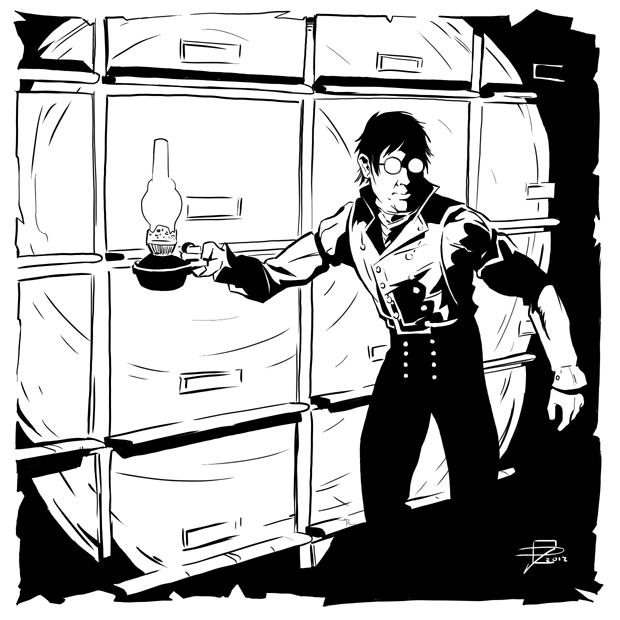The Tomb
The Tomb is Lovecraft’s first fictional work published as an adult, and while rough around the edges, clearly sets forth some key elements of his future works. The influence of Edgar Alan Poe can be heavily felt in this tale as HPL describes not only the eerie mausoleum but the protagonist’s overwhelming obsession with it. HPL was hugely inspired by the works of Poe and borrows a lot from his atmospheric and gothic horror styles. But also on display in this piece is the start of an idea that would continue throughout all of Lovecraft’s work. Madness.
Madness is often the topic of gothic horror, but HPL takes a new turn with it. In Lovecraftian fiction, madness is not the ailment of the deranged and sick, but often is merely the mind trying to cope with the true scope of reality. We create stories and legends in order to protect ourselves from what it real. In HPL’s writing, it is when we are suddenly forced to realize the truth of reality that we go mad. The universe is a dark and sinisterly complicated place, and if we were to attempt to figure out our place in it, surely we would be driven insane. This is a theme that we will see time and time again throughout his work. And if anything, it could be said that this is the central theme of all his writing and the main driving force behind the mythos stories.
But The Tomb is not a mythos story (we will get to those later). It is at its heart a rather simple, atmospheric ghost story. Our protagonist, Jervas finds that in his boredom and spare time as a well to do upper-class individual he has nurtured a rather bizarre fascination with the large mausoleum on the estate church grounds. Kept at bay by a sturdily chained gate, Jervas is left to dream about what dark and wondrous things lie beyond. For years he wonders, until finally he finds a key that will let him.
The Tomb is certainly a quick read and allows newcomers to quickly get a handle on Lovecraft’s enthusiasm for using a rather lofty vocabulary and somewhat archaic method of writing. Again he was mimicking the authors he enjoyed. And while he was writing well into the second decade of the 20th century, he had the desire to write as if he were more Poe’s contemporary than his descendant. This can often turn off many readers, but for those, like me, who also love the work of Poe, Shelley or others, this only enriches the literary tapestry of HPL’s writing. It steeps his work in a sort of atmosphere crucial to the stories he is telling. And it also enlists a sense of the intellectual into his characters. That these are well to do and learned men, and that should give some credence to what they have to say, no matter how outlandish it may seem to the common mortal man.
The complete text can be found here: HPL’sThe Tomb
 |
| Illustration by Jeff Powers © 2012 |


1 comment:
Okay, I read the first story, and I want something better. I'm intrigued enough to want to read some more Lovecraft. Lead me oh wise one...
Post a Comment